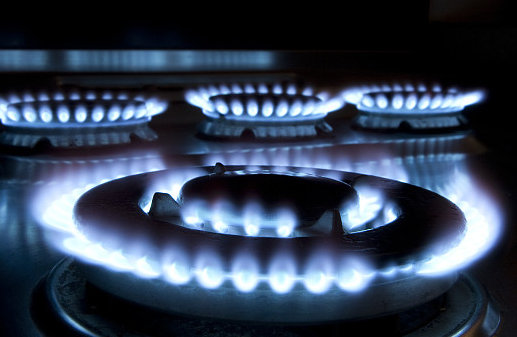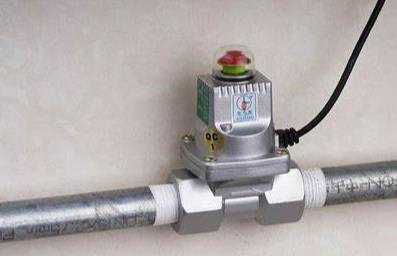Progress of natural gas desulfurization technology
The removal of H2S, CO2 and H20 from natural gas is based on the principle that the various gases pass through the membrane at different rates, so as to achieve the purpose of separation. The gas permeation process can be divided into three stages: (1) the gas molecules dissolve on the membrane surface; (2) The dissolved gas molecules are active diffusion and movement in the membrane; (3) The gas molecules desorption from the other side of the membrane. Gas separation is a concentration-driven process that is directly related to the pressure and composition of the feed and permeate gases.

In order to improve the separation efficiency of the membrane, the membrane separation units used in the industry are mainly hollow fiber type and spiral coil type, which can be properly selected according to the specific treatment conditions. The unit area price of hollow fiber membrane is cheaper than that of spiral coil membrane, but the permeability of the membrane is poor, so the required membrane area is larger. In addition, the hollow fiber tube bundle has a small diameter (usually less than 300 microns), which is used to transmit permeable gas. If the permeable gas flow is too large, the pressure in the tube will decrease significantly and affect the separation efficiency of the membrane. The spiral coil design solves this problem well, because it is to roll the membrane with a thinner selective permeation layer than the hollow fiber membrane into a tubular container, so it has a higher permeation flow rate, and the membrane's bearing capacity is also improved. At the same time, the unit can also be designed to the appropriate size according to special requirements for easy installation and operation. Therefore, although the unit area price of the spiral coil film is 3-5 times more expensive than that of the hollow fiber film, because of its above advantages, foreign natural gas membrane treatment devices mostly use spiral coil separation units.
Membrane separation technology is suitable for the treatment of natural gas with low raw gas flow and high acid gas concentration, and it is also suitable for the change of raw gas flow or acid gas concentration, but it cannot be used as a treatment method for obtaining high purity gas. It is not suitable for natural gas with large feedstock gas flow and low acid gas content, and the existence of too much water and acid gas at the same time will adversely affect the performance of the film. At present, foreign membrane separation technology mainly removes CO2 from natural gas, and the application of separating H2S is relatively few, and the concentration of H2S treated is generally low, and the treatment flow rate of most applications is not large, and some are only used for single gas Wells in remote areas. However, membrane separation technology, as a treatment process to remove a large amount of acid gas, or mixed with the traditional process, provides a feasible method for the treatment of natural gas with high concentration of acid gas. Many useful attempts have been made abroad in this regard. In particular, the treatment of some high H2S natural gas has obtained satisfactory results.
1.2.3 Pressure Swing Adsorption Technology (PSA)
Pressure swing adsorption technology is an important gas separation technology, which is characterized by reducing the partial pressure of adsorbed components to regenerate the adsorbent, and the rapid reduction of partial pressure is achieved by reducing the total pressure of the system or using purge gas. The technology was successfully developed in 1959 and is now widely used in industry due to its low energy consumption
1.3 Biological desulfurization method
Biological desulfurization technology is a new process developed in the 1980s, it has many advantages, no catalyst and oxidant, no chemical sludge treatment, less pollution, low energy consumption, high efficiency, many domestic and foreign scholars are committed to the research of this technology. It uses various microorganisms in the fermentation solution (such as thiobacillus denitriformis, thiobacillus thiooxides, thiobacillus ferrooxidans, thiobacillus thiobacillus thiodisulfide, thiobacillus filamentus and thiobacillus) to oxidize H2S to elemental S and H2SO4 under the condition of low oxygen, and the reaction formula is as follows
2H2S+O2=2S+2H2O
2S+302+2H2O=2H2SO4
So far, there are two kinds of natural gas biological desulfurization processes that have obtained industrial applications: Bio-SR and Shell-Paques processes.

1.3.1 Thiobacillus ferrooxidans (i.e. Bio-SR process)
Bio-SR process was developed by the Japanese steel pipe company Keihama Production, industrial application in 1984, mainly used for industrial waste gas (such as refinery amine washing unit and Claus unit exhaust gas) sulfur removal, the use of thiobacilus ferrooxidans, operating under acidic conditions, has built two sets of units.
Thiobacillus ferrooxidans have eosinophilus, so the reaction should be carried out under acidic conditions, and the oxidation pH value is 12 ~ 14. The process utilizes the indirect oxidation of thiobacillus ferrooxidans to remove H2S with iron sulfate, and then oxidizes low iron to trivalent iron with thiobacillus ferrooxidans. Its desulfurization principle is as follows:
- EMERSON
- Honeywell
- CTI
- Rolls-Royce
- General Electric
- Woodward
- Yaskawa
- xYCOM
- Motorola
- Siemens
- Rockwell
- ABB
- B&R
- HIMA
- Construction site
- electricity
- Automobile market
- PLC
- DCS
- Motor drivers
- VSD
- Implications
- cement
- CO2
- CEM
- methane
- Artificial intelligence
- Titanic
- Solar energy
- Hydrogen fuel cell
- Hydrogen and fuel cells
- Hydrogen and oxygen fuel cells
- tyre
- Chemical fiber
- dynamo
- corpuscle
- Pulp and paper
- printing
- fossil
- FANUC
- Food and beverage
- Life science
- Sewage treatment
- Personal care
- electricity
- boats
- infrastructure
- Automobile industry
- metallurgy
- Nuclear power generation
- Geothermal power generation
- Water and wastewater
- Infrastructure construction
- Mine hazard
- steel
- papermaking
- Natural gas industry
- Infrastructure construction
- Power and energy
- Rubber and plastic
- Renewable energy
- pharmacy
- mining
- Plastic industry
- Schneider
- Kongsberg
- NI
- Wind energy
- International petroleum
- International new energy network
- gas
- WATLOW
- ProSoft
- SEW
- wind
- ADVANCED
- Reliance
- YOKOGAWA
- TRICONEX
- FOXBORO
- METSO
- MAN
- Advantest
- ADVANCED
- ALSTOM
- Control Wave
- AB
- AMAT
- STUDER
- KONGSBERG
- MOTOROLA
- DANAHER MOTION
- Bently
- Galil
- EATON
- MOLEX
- Triconex
- DEIF
- B&W
- ZYGO
- Aerotech
- DANFOSS
- KOLLMORGEN
- Beijer
- Endress+Hauser
- MOOG
- KB
- Moxa
- Rexroth
- YAMAHA
- Johnson
- Westinghouse
- WAGO
- TOSHIBA
- TEKTRONIX


Email:wang@kongjiangauto.com



































































































































